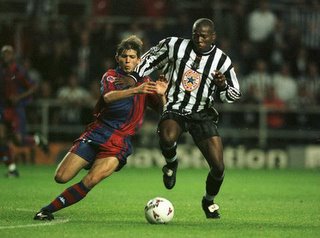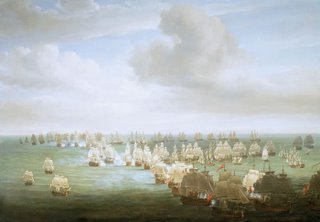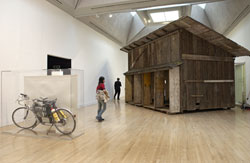'Keelmen Heaving in Coals by Moonlight', by William Turner 1835, depicts keelmen on the River Tyne transferring coal from barges, or keels ( a word believed to be derived from a type of Anglo-saxon boat known as ceols ) to sea going vessels.
The Tyne keelmen were first recorded in 1516 and had a proud and militant history; they had their own community in the Sandgate district just outside the old city walls of Newcastle and their jobs were handed down from father to son.
In modern times the Tyne has been navigable for about 10 miles up to Newcastle but in earlier years, big ships couldn't get up the river as it was too shallow, so the Keelman's job was to ferry coal from mines up the river to the harbour mouth at North Shields, from where collier sailing ships would take their cargo down the East coast to London.
The Tyne keel was a type of barge typically holding about twenty tons of coal and was rowed in all weathers, day and night. The keelmen men would row down the river on the ebb tide, assisted by a sail if the wind was favourable, and after off-loading the coal would row back to Newcastle on the flood tide.
Coal was the lifeblood of Tyneside for centuries and Keelmen were first recorded as a fraternity in 1539. In 1697 they organised a charitable fund and established the Keelmen's Hospital in 1701 and the building survives to this day:
Through Sandgate, through Sandgate,
As aa came through Sandgate
Aa heard a lassie sing:
Weel may the keel row,
The keel row, the keel row
Weel may the keel row
That ma laddie's in."











